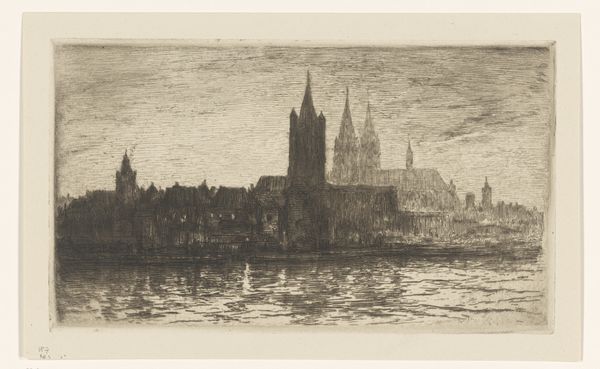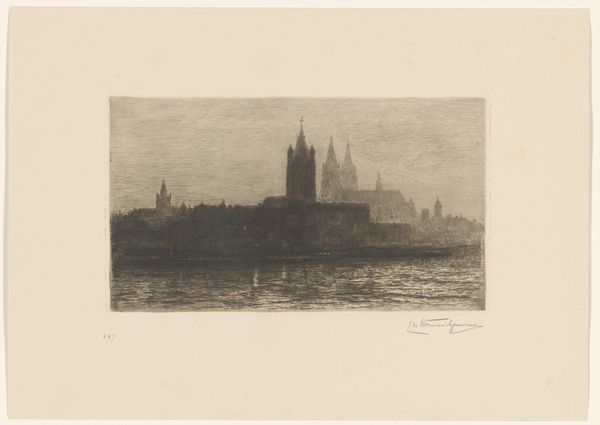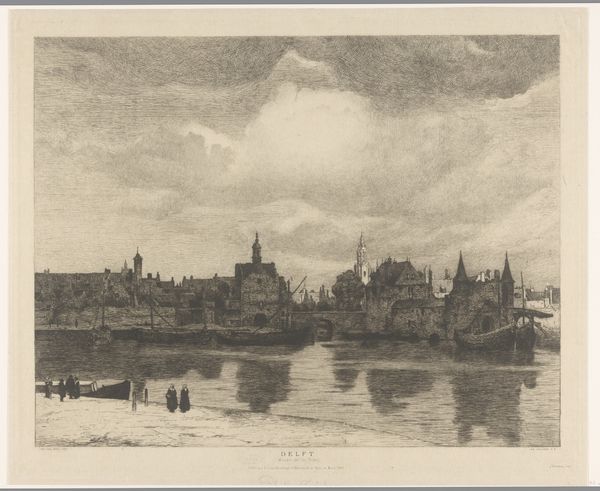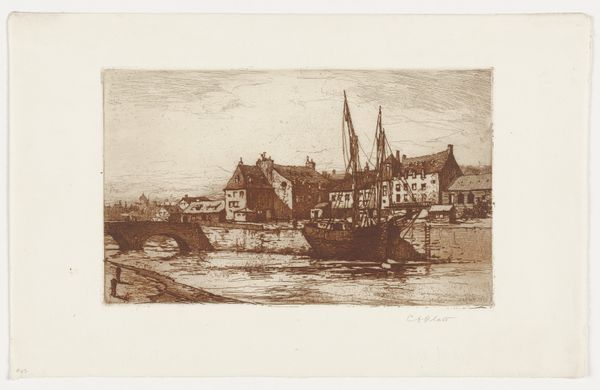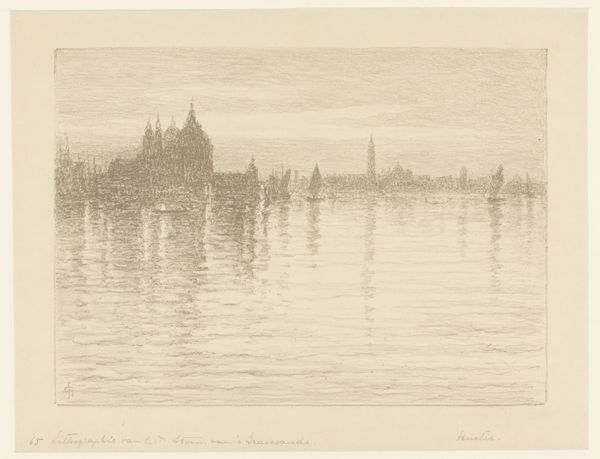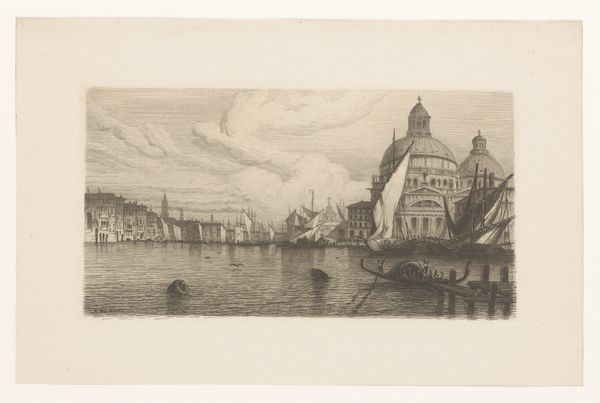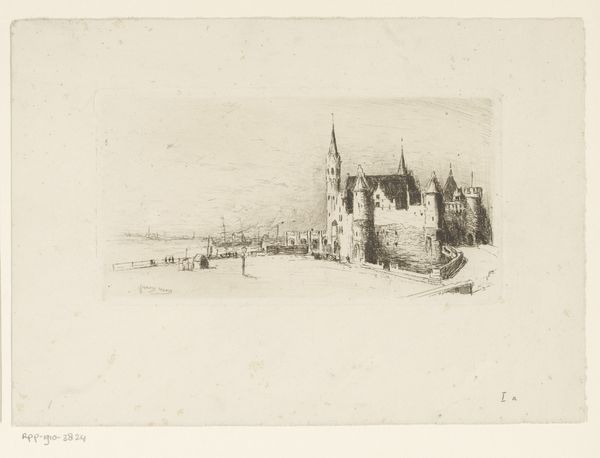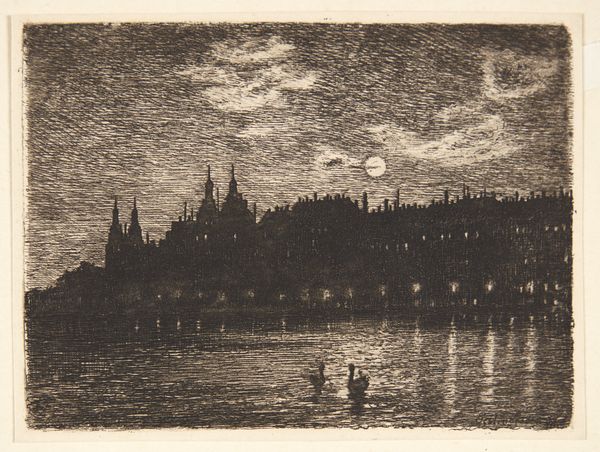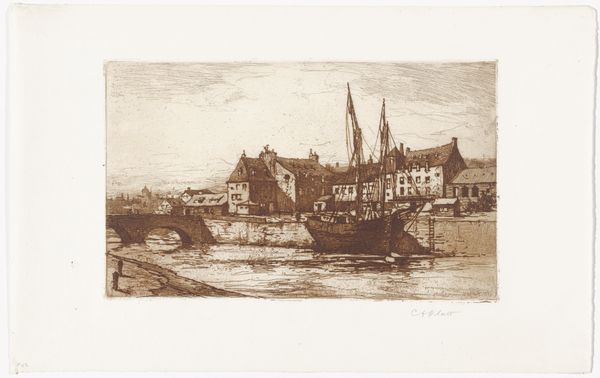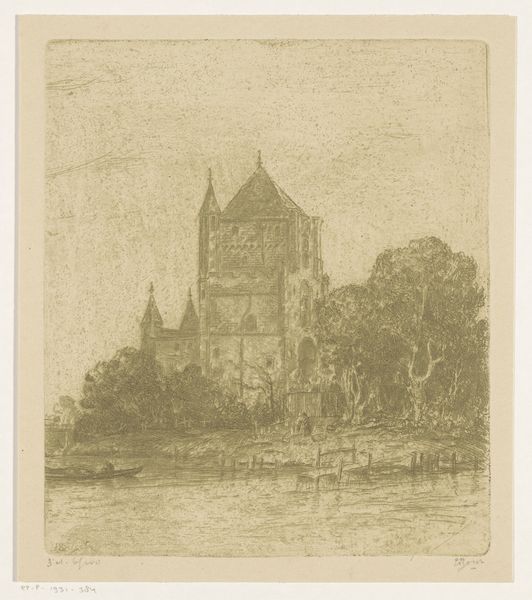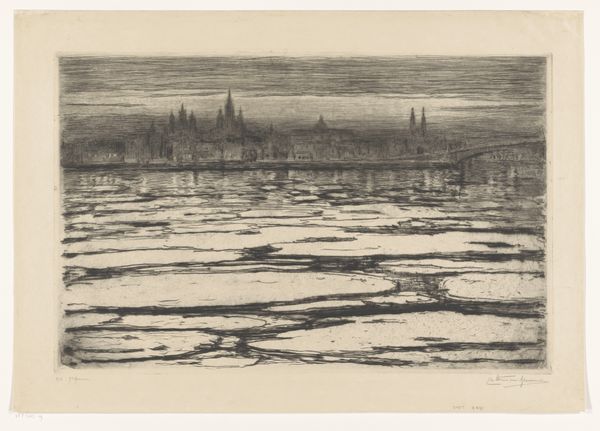
Dimensions: height 148 mm, width 257 mm
Copyright: Rijks Museum: Open Domain
Curator: Looking at this evocative cityscape, "Gezicht op Keulen bij avond," or "View of Cologne at Evening," etched by Carel Nicolaas Storm van 's-Gravesande around 1896, you immediately get a sense of time and place. Editor: My first impression is one of atmospheric depth. The tones create an ethereal almost dream-like image. The composition feels traditional, perhaps even a bit romantic, but the dark palette subverts that somewhat. Curator: Van 's-Gravesande, a key figure bridging the Hague School and Impressionism in the Netherlands, captures more than just the buildings of Cologne. As an etching, it showcases a printmaking process demanding meticulous labor. How do you think his choice of such a demanding method contributes to the finished piece? Editor: The hatching and cross-hatching generate a phenomenal range of light and shadow which becomes an essential component. Its tonal qualities evoke something between a mezzotint and aquatint, allowing areas of soft gradations which gives that atmospheric touch I mentioned earlier. The composition is simple yet strong, built up on horizontal bands of river, city, sky... Curator: And if we consider the materials readily available at the time, etching allowed for replicability and wider distribution, meaning this view of Cologne could reach a broader audience than a unique painting. Editor: True, but from a formal standpoint, look at how the spires of the Cologne Cathedral dominate the composition, a triad against a muted skyline, reflected faintly on the still waters of the Rhine. Notice how all visual information is reduced to tonal relation and gradations in a relatively low range. Curator: Perhaps van 's-Gravesande used the etching to comment on the industrialization happening in urban centers at that time, through its reproducible format and his almost impressionistic style; he provides what feels to me to be like an urban document of change during the late nineteenth century. The factories supporting this industrial process would depend on access to trade. I wonder, did he spend long hours simply gazing, trying to reflect the essence of what it was to be there as a form of labor itself? Editor: A valid proposition to ponder; nevertheless, beyond socio-economic perspectives, this image, viewed solely within its aesthetic qualities, demonstrates a masterful study in light and tonal harmony, especially as captured within a specific time of day. It truly provides much to see. Curator: Precisely! Considering the socio-historical context along with the artist's craftsmanship deepens our understanding of it; an everyday scene turned evocative by its material means. Editor: Indeed. Considering solely the composition opens the mind and reveals a deep aesthetic value.
Comments
No comments
Be the first to comment and join the conversation on the ultimate creative platform.
